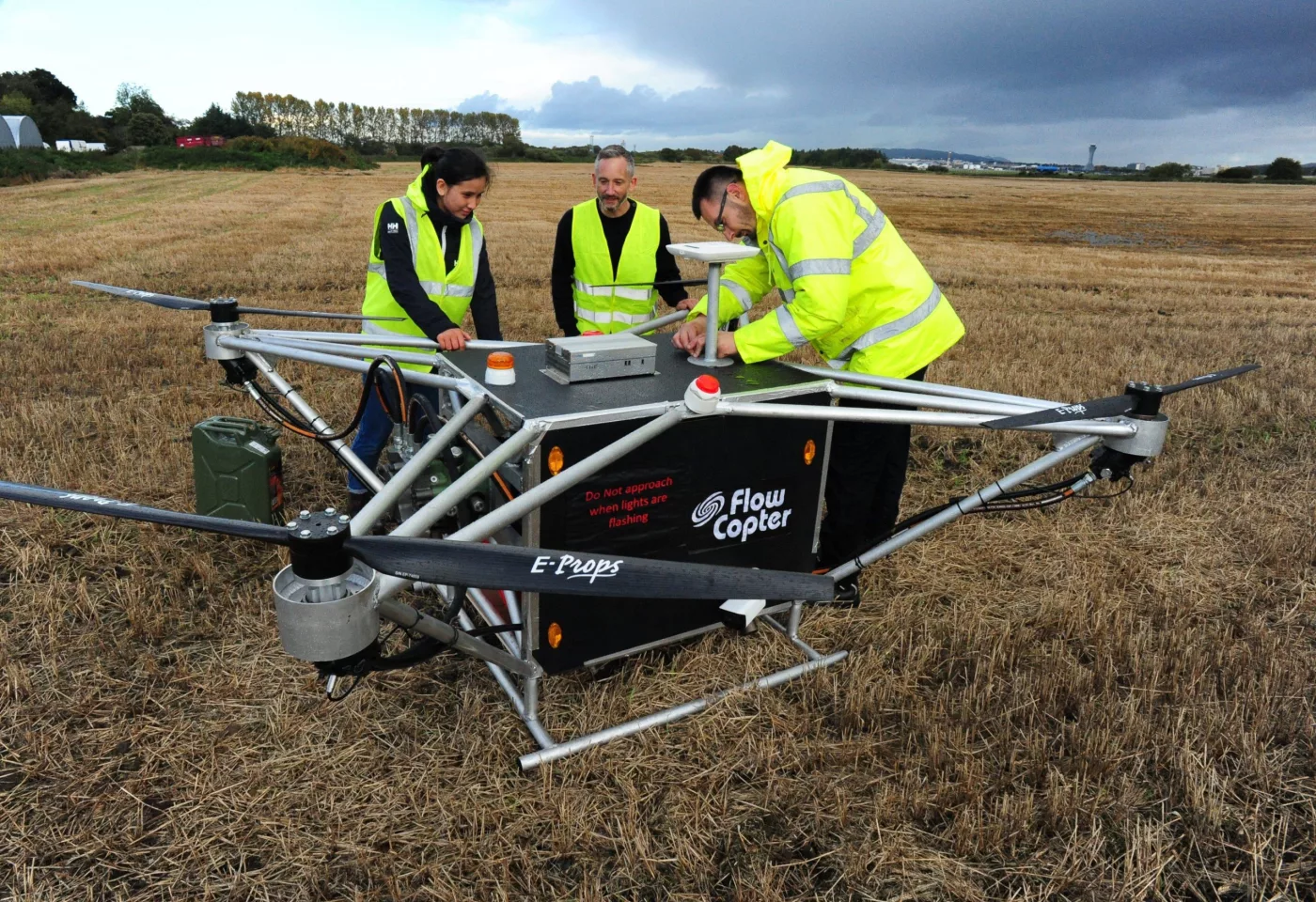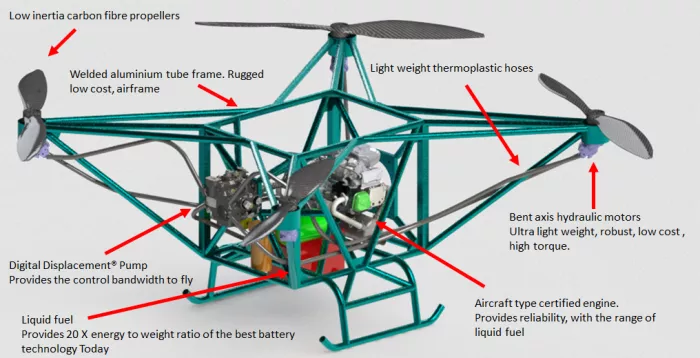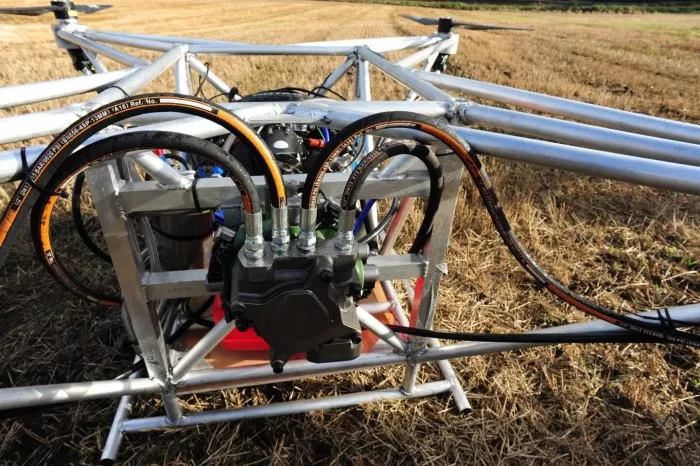According to new atlas, flowopter has begun flight testing of the world's first hydraulically driven UAV** This unique heavy-duty UAV from Edinburgh, using Rotax engine and bending shaft hydraulic motor similar to that used on large tree harvesters, is expected to replace the power and range of electric UAVs. It is now being tested to lift a weight of 95 kilograms.

Flowopter promises an extraordinary range of 900 kilometers (560 miles), a endurance of more than 6 hours, and a huge payload of 150 kilograms (330 pounds). It is made for niche markets over long distances, especially for delivery to super remote settlements and offshore oil drilling platforms, as well as extended search and rescue missions and long-distance agricultural use.
These use cases simply cannot be filled by an all electric power system - the specific energy of lithium-ion batteries is dwarfed by the energy that fossil fuels can provide. However, the internal combustion engine is not suitable for providing the near immediate torque adjustment required to balance multi rotor aircraft in the air.

Flowopter's solution is to run the Rotax aeroengine through a digital displacement pump, which can quickly and accurately adjust the pressure and enable a low-cost, high torque hydraulic motor to drive each propeller. The durability of fossil fuels is complemented by very fast torque adjustment - these bending shaft hydraulic systems have been well used in some extremely harsh environments, such as John Deere's giant tree harvester and Holt's eraser stump crusher.

How do they perform? In recent months, flowopter has released some test videos, which are carried out on the ground tether and relay rope, showing that the large Bessie lifted the alleged 95kg weight and kept hovering.
From the stability point of view, it seems that the digital displacement pump has the ability to complete this work - at least in a windless warehouse. Of course, it doesn't seem as stable as some of the large evtols we see flying, but it's unclear at this stage whether it's related to the flight control software or whether the displacement pump is a little behind the action. Unfortunately, it may be completely manually controlled at this stage, so we have to wait until we see some prototypes closer to the final product.